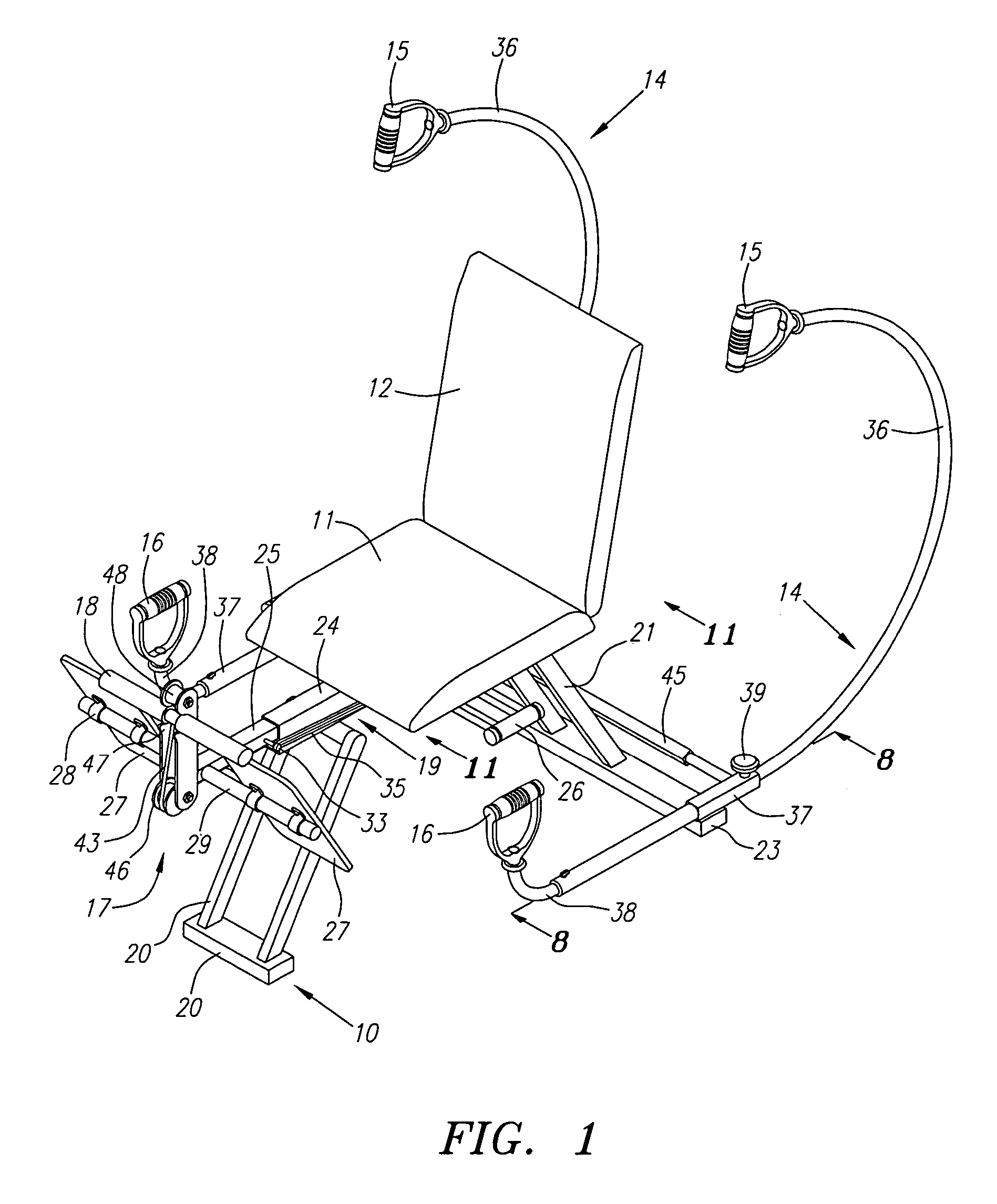Multi-purpose exercise device
a multi-purpose, exercise device technology, applied in the direction of resistance force resistors, gymnastic exercise, stilts, etc., can solve the problems of not allowing the full range of possible movements, lack of placement of exercise components, and failure to achieve a design wherein the effect of pliable elastic and thorough workout of arm and back muscles
- Summary
- Abstract
- Description
- Claims
- Application Information
AI Technical Summary
Benefits of technology
Problems solved by technology
Method used
Image
Examples
Embodiment Construction
can be better understood with reference to the accompanying drawings, wherein:
[0020]FIG. 1 is a front, perspective view of the exercise device in accordance with the present invention, showing the various exercise components of the device in a static position;
[0021]FIG. 2 is a rear, perspective view of the exercise device in accordance with the present invention, showing the various exercise components of the device in a static position;
[0022]FIG. 3 is a side view of the exercise device in accordance with the present invention with dashed lines representing the internal elastic bands that are connected to the foot platform and the seated-row grip, which bands pass through the length of the hollow longitudinal rail beneath the seat, with further dashed lines representing one of the internal elastic bands that passes through the length of the hollow curvilinear arms;
[0023]FIG. 4 is a front, perspective view of the foot platform and seated-row grip;
[0024]FIG. 5 is a side view of the fo...
PUM
 Login to View More
Login to View More Abstract
Description
Claims
Application Information
 Login to View More
Login to View More - R&D
- Intellectual Property
- Life Sciences
- Materials
- Tech Scout
- Unparalleled Data Quality
- Higher Quality Content
- 60% Fewer Hallucinations
Browse by: Latest US Patents, China's latest patents, Technical Efficacy Thesaurus, Application Domain, Technology Topic, Popular Technical Reports.
© 2025 PatSnap. All rights reserved.Legal|Privacy policy|Modern Slavery Act Transparency Statement|Sitemap|About US| Contact US: help@patsnap.com



